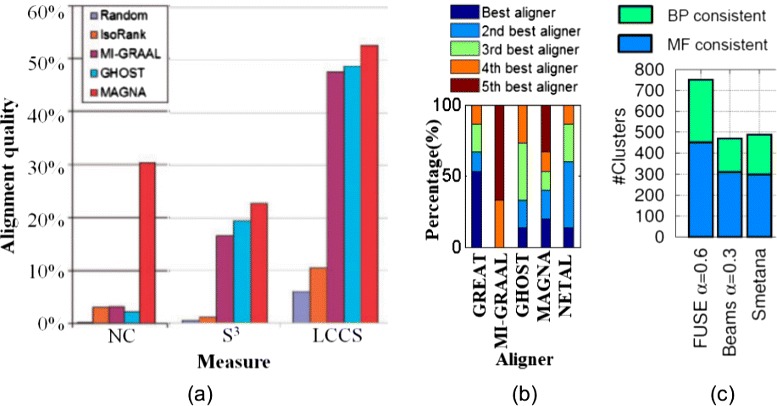Fig. 6.

Additional illustration of the performance of different global network aligners. This figure shows a the superiority of MAGNA over IsoRank, MI-GRAAL, and GHOST with respect to NC when aligning synthetic noisy yeast networks with known node mapping, and with respect to S 3 and LCCS when aligning Campylobacter jejuni and Escherichia coli bacterial PPI networks [69], b the ranking of GREAT, MI-GRAAL, GHOST, MAGNA, and NETAL over all alignments produced by the original GREAT study [72] with respect to three alignment quality measures (NC, S 3, and LCCS) combined, demonstrating the superiority of GREAT over the other aligners [72], and c the superiority of FUSE (its best parameter version, as reported in [78]) over BEAMS (its best parameter version, as reported in [78]) and SMETANA with respect to the number of functionally consistent aligned node clusters, i.e., clusters that are enriched in a biological process (BP) or molecular function (MF) GO term [78]. The figures in a, b, and c are adopted from [69, 72] and [78], respectively
